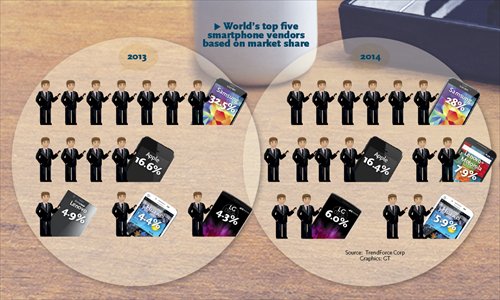Motorola makes return to China
Lenovo-controlled company comes back with three new models

Moto X Pro Photo: Courtesy of Motorola

Chinese-owned Motorola Mobility unveiled on Monday three new handsets in China, signifying an ambitious comeback in the world's largest smartphone market.
Motorola Mobility, which is owned by the world's PC leader Lenovo, rolled out three new but familiar-looking Android handsets - Moto X, Moto X Pro, and Moto G - at a press conference held in Beijing on Monday.
Lenovo clearly knew that Motorola missed out on the smartphone bandwagon years ago and that Motorola made a wrong decision in leaving China and other emerging markets, Liu Jun, executive vice president of Lenovo, said at the launch event.
He expected that Moto can win the market back by focusing "on innovation and user experience."
In order to woo Chinese consumers, Motorola will launch an online customized design studio during the first half of the year in the Chinese mainland, the first Asian market to have such services, according to Rick Osterloh, COO of Motorola.
The three new Moto models seem to be what Lenovo are hoping to bank on to steal some of the limelight away from domestic rivals like Xiaomi Inc and Huawei Technologies Co, especially in the mid- and high-end segments.
While the Lenovo phone brand will continue targeting domestic mid- and low-end consumers, the Motorola brand aims to attract the mid- and high-end end users, said Zhang Yi, CEO of Guangzhou-based iiMedia Research, implying he has confidence in Motorola under the ownership of Lenovo.
"Lenovo's mature distribution channels in its home market will make it easier for Motorola to earn itself a position in the pantheon of smartphone greats," Zhang told the Global Times Monday.
In addition, the revitalized Motorola may receive a warm market reception in China where some people still have nostalgia for the former US big-name phone veteran, said Zhang.
Wang Yanhui, head of Shanghai-based Mobile China Alliances, appears less optimistic than Zhang.
Wang is concerned about Motorola's prospects in the fiercely competitive mainland market, where domestic rivals are actively furthering their own presence in the more profitable mid- and high-end phone segments to make up for having sacrificed profits by previously focusing on the low-cost segment to grab market share.
Xiaomi revealed in a regulatory filing of domestic appliance manufacturer Midea Group, which entered into a tie-up with the phone maker in mid-December 2014, that its 2013 operating profit margin was 1.8 percent. By comparison, Samsung's margin reportedly stood at 18.7 percent in 2013.
Huawei appears to have already made a dent in the mid- and high-end segments with its Ascend Mate series.
Rising star Xiaomi, famous for its low-budget phones, also squeezed into the higher-level battlefields via its newly released flagship Mi Note, which the company claimed to be a phone that can stand comparison with Apple's devices.
"Motorola's new gadgets have no distinctive and appealing edges over other comparable phones in the market," Wang told the Global Times Monday.
The starting prices are reasonable, but the user experience and future marketing are also key factors for restoring Chinese consumers' confidence, making it hard to predict the future of Motorola in the market, Wang said.
The Moto G, featuring a 5-inch display, will be available for pre-orders via domestic major online platforms on February 10 at 1,299 yuan ($208.6) for the 8GB version and 1,499 yuan for the 16GB version.
The 5.2-inch Moto X will be priced at 3,299 yuan for the 16GB version and 3,699 yuan for the 32 GB version, enabling pre-orders on Monday.
The 6-inch Moto X Pro will be made available in March. Lenovo did not disclose further details.
Both Wang and Zhang said that Lenovo likely has more opportunities to rack up a fortune in overseas markets, as the heyday in the Chinese smartphone market seems to be over.
Data from the China Academy of Telecommunication Research showed on January 13 that China shipped 452 million phones in 2014, down 21.9 percent year-on-year.
As for the smartphone shipments, growth in China slowed to 11 percent year-on-year in the third quarter, while Asia-Pacific regions, excluding Japan, rose 24 percent from the year-ago period, according to a report US consultancy firm International Data Corporation released in December 2014.
"Motorola's overseas distribution network and a 2,000-patent portfolio will be a boon for the globalization of its Chinese boss," said Zhang.
According to global research firm TrendForce's report on January 20, Lenovo, after putting Motorola Mobility under its wing in October 2014, seized a 7.9 percent share of the global smartphone market in 2014, up from the previous year's 4.9 percent, ranking third after only Apple and Samsung.